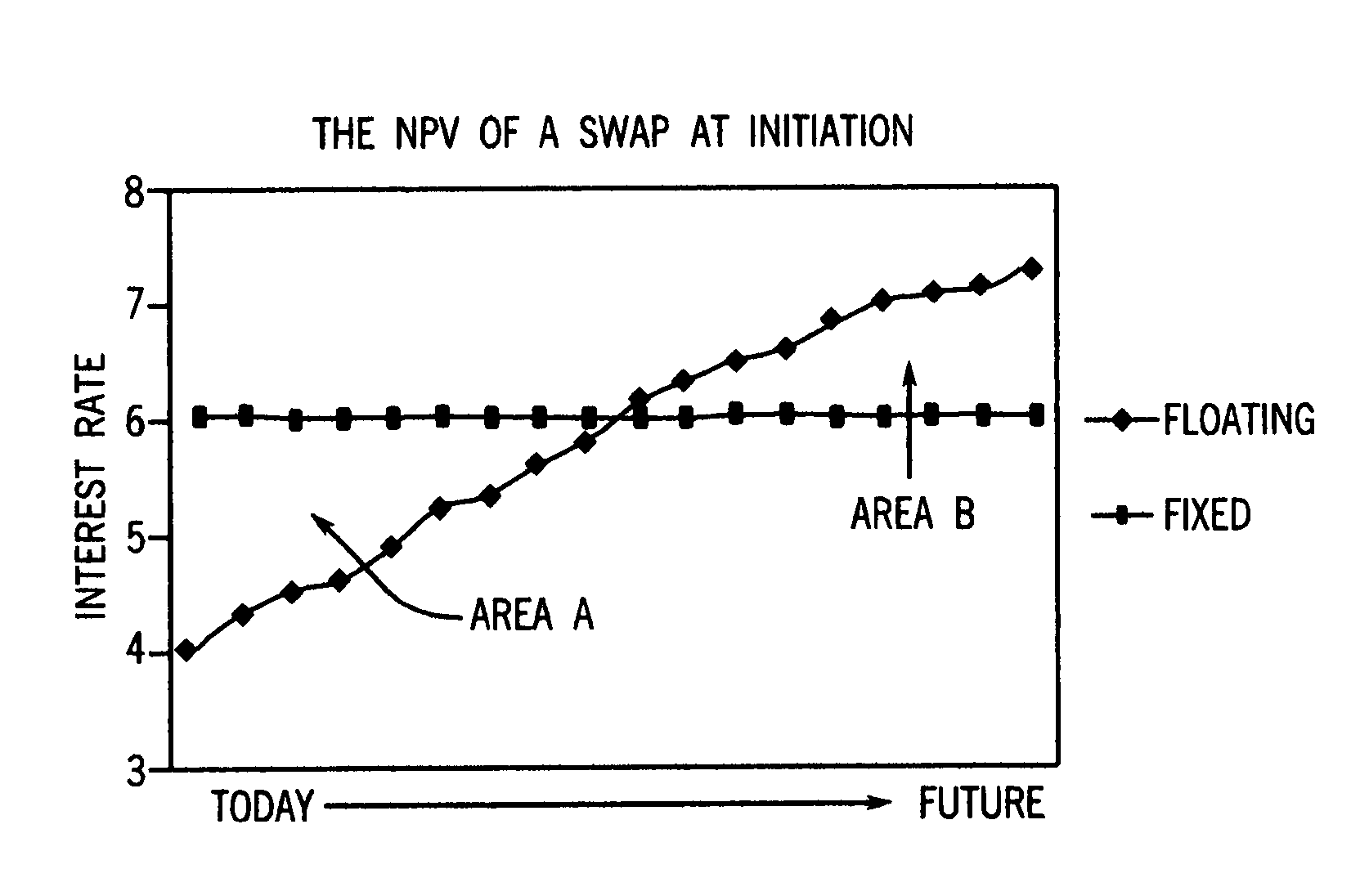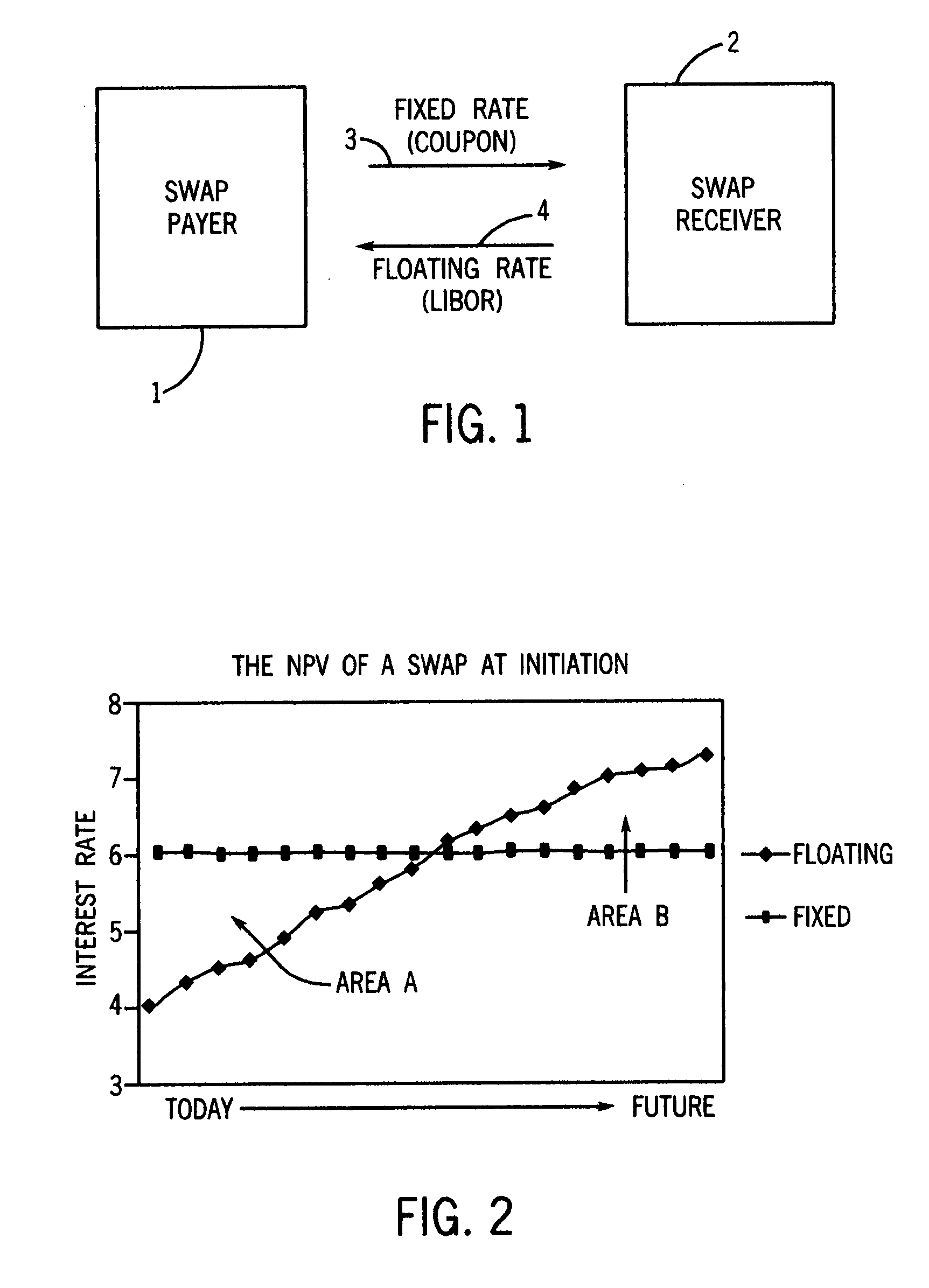Method, system, and computer program for an electronically traded synthetic exchange traded coupon
a synthetic exchange and coupon technology, applied in the field of methods, systems, computer programs, financial instruments, can solve the problems of difficult selling of ir swap positions, short sellers, and general limited secondary market of newly executed positions, so as to facilitate swap users' trading, facilitate the tracking of profit and loss, and reduce administrative costs
- Summary
- Abstract
- Description
- Claims
- Application Information
AI Technical Summary
Benefits of technology
Problems solved by technology
Method used
Image
Examples
Embodiment Construction
[0064] The invention itself, together with further objects and attendant advantages, will be understood by reference to the following description, taken in conjunction with the accompanying drawings. As those skilled in the art will appreciate, the system described herein should accommodate a plurality of financial markets.
[0065] Referring first to FIG. 3, a schematic illustration is seen showing the operational dynamics of a market for interest rate swaps in accordance with the principles of the present invention. The market can be comprised of an electronic over-the-counter (OTC) (or exchange) based trading system. An OTC electronic platform (or futures exchange) 19 is a forum through which dealers 8, customers 1, and traders 10 can trade. A futures exchange can be used if the interest rate swap of the present invention is traded by retail clients. Otherwise an OTC e-platform can be used. The OTC e-platform (or futures exchange) 19 can incorporate any variety of rules, convention...
PUM
 Login to View More
Login to View More Abstract
Description
Claims
Application Information
 Login to View More
Login to View More - R&D
- Intellectual Property
- Life Sciences
- Materials
- Tech Scout
- Unparalleled Data Quality
- Higher Quality Content
- 60% Fewer Hallucinations
Browse by: Latest US Patents, China's latest patents, Technical Efficacy Thesaurus, Application Domain, Technology Topic, Popular Technical Reports.
© 2025 PatSnap. All rights reserved.Legal|Privacy policy|Modern Slavery Act Transparency Statement|Sitemap|About US| Contact US: help@patsnap.com



